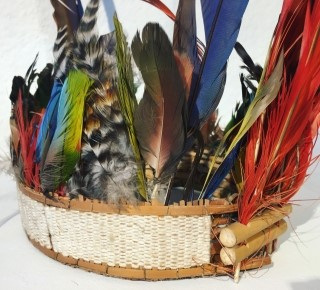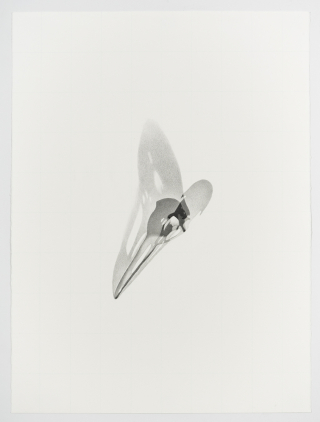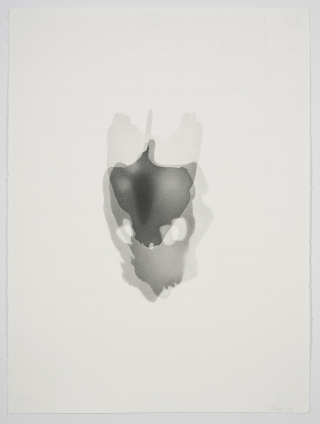
Salisbury
An Observer Observed: Fieldwork in Papua New Guinea

This exhibition (on the 3rd floor), recently expanded by a donation, features objects and photographs relating to Richard Salisbury's fieldwork among the Siane of the Eastern Highlands of New Guinea and the Tolai of the Gazelle Peninsula of New Britain.
Richard Salisbury was a pioneer in developmental anthropology and one of the founders of the Department of Anthropology at McGill University.
In this display, we turn our gaze to the work of the anthropologist. What was fieldwork like in the 1950s? What was the anthropologist's relationship with communities? Field notes, photographs and objects give us clues to answer these questions.
Shadowland at the Redpath

Grus americana, CMNMA # 5567 (Whooping Crane skull), 2023
Graphite on acid-free paper / Graphite sur papier sans-acide
76.2 x 56.8 (30” x 22 3/8”)
From January 9th to June 7th, 2024
The Redpath Museum is pleased to present Shadowland at the Redpath, an exhibition by Lorraine Simms. Drawings from her ongoing series will be exhibited within the permanent collections throughout the two second-floor galleries.
In these works, Simms faithfully represents the shadows cast by the skulls and bones of endangered animals. Working with specimens from the vast collections at the American Museum of Natural History in New York (NY), the Canadian Museum of Nature in Ottawa (Ontario), and here, at the Redpath Museum in Montreal, Simms’s drawings explore concepts of absence, empathy, and loss. These ghostly drawings suggest disappearance, both of individual animals and of their species.
Time expands in these drawings: months of forensic attention are devoted to the process of transforming traced outlines into luminous grey tones. The subtle sense of movement created by these transparent overlapping shadows conjures the spirit, or ghost, of each animal. This haunting evocation of a once living animal encourages feelings of reverence, empathy, and kinship.

Caretta caretta, RM #5254 (Loggerhead sea turtle cranium), 2023
Graphite on acid-free paper / Graphite sur papier sans-acide
76.2 x 56.8 (30” x 22 3/8”)
Prints / Imprints
Starting on November 21
Since the dawn of time, humans have liked to leave traces of their passage on Earth. Whether we're thinking of rock art, the monuments of vanished civilizations, or even the graffiti that adorns our modern cities, people leave footprints behind.
From November 21, a new showcase in the World Cultures gallery will present a selection of prints that are likely to be part of a series of works that have been hidden here and there in the Musée by a mystery artist, probably around the early 2010s. The staff, who occasionally find these works under display cases, behind furniture or in drawers in the museum galleries, have preserved the 25 works found so far.
What was the artist's purpose behind this? We may never know. But one thing's for sure: the artist has left his mark at the Musée, and our curiosity is well and truly piqued!

Œuvre #5332
Dated 04/05/09
Artist: Unknown
Found: April 29, 2016. Under mineral case 10.
"From Shadow to Light: The Sun in Material Culture" and "Day and Night: Animal instinct during an eclipse"
Until May 3, 2024.

Bottle with stirrup handle, Chimú*, Peru, RM1344, Donated by: T. B. Macauley, 1927.
Like us, were you impressed by the beauty of the total solar eclipse on 8 April? Then why not extend your amazement by visiting our two new showcases dedicated to this phenomenon? For the occasion, we've brought out of the shadows several objects that have never or rarely been exhibited. The selection of objects and specimens in the showcases is designed to highlight the importance of the Sun for both humans and animals. Learn more about the impact of eclipses on animal behaviour and the symbolic importance of the Sun throughout history and cultures.
